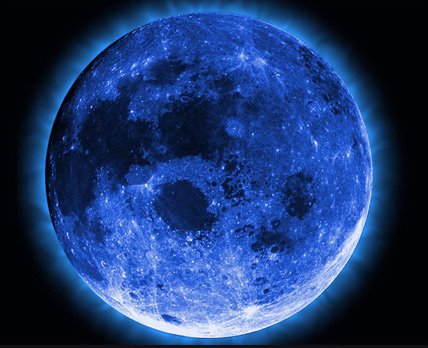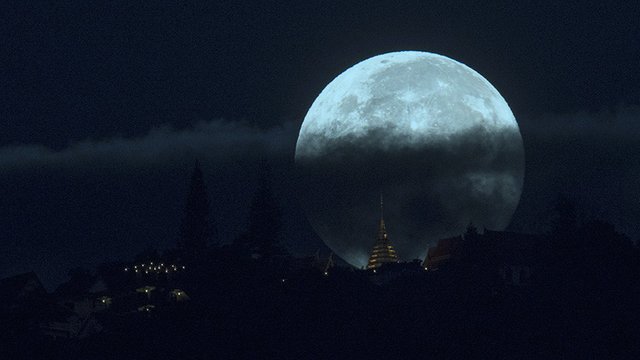LUNA AZUL
It is called the blue moon (the translation of English blue moon) to the second full moon occurred during a same month of the Gregorian calendar (the one usually used in the West), which happens approximately (on average) every 2.5 years1 and, originally, at the third full moon when in any season of the year four full moons are given instead of three. The "blue moon" phenomenon gained popularity when it occurred twice in 1999 (January and March). The media widely reviewed the event, little known until then. Naturally, in February 1999, no full moon was produced.
Based on the origin of the term in the Gregorian calendar, its use was probably spread in medieval Europe. The Spanish translation is not completely complete, since the expression comes from the English blue ("blue"), which in turn comes from a deformation of the old English belewe, which actually means "traitor", since an additional moon in the spring it meant extending the fast of Lent.2 Between three and seven times in each century there are two blue moons in the same year. Because the month of February is the only one whose duration is less than the lunar cycle, the first always occurs in January and the second, in decreasing order of probability, in March, April or May.3 Two blue moons were observed on December 2 and 31, 2009, coinciding that on December 31, 2009 there was a partial eclipse of the moon, whose full moon was in December. The term belewe was abbreviated as blwe and then became blue, and so it happened to the Latin culture translated as "blue". Thus, according to the meaning of belewe it would be a traitorous moon, although what would really be traitor is the 31-day Gregorian month in the sense that its duration is 1.5 days longer than the natural month marked by the moon, of 29.5 days . The English word month itself is root moon and in fact means "lunar", but eight of the "months" of the Gregorian calendar (Christian Roman) are not lunar, and when it happens that the beginning of a month of 31 days coincides with the full phase is given a month belewe or belewe month, blwe month, and then evolves by sound analogy as blue month and blue moon. Not being an astronomical event but a cultural curiosity of the Christian calendar is also called belewe month or traitor month, a less popular name but more consistent with the original meaning. The traitorous month does not exist in cultures that use lunar calendars, such as Jewish and Muslim for which the calendar is sacred, creation of God (Yahweh, Allaah), and therefore perfect and part of religion. Blue moon in 2017
On December 21 during the morning in Japan, citizens witnessed this phenomenon. Some of them claim, while traveling by plane, that suddenly the color of the moon changed and became a pearly bluish.4 Originally, it was assumed that the phenomenon would have to happen between the first months of 2018.5 However the 21 December 2017 the Moon was not in full phase and in fact it was the third day of the lunar cycle (first visible phase) and the day was neither the 30 nor the 31. 
